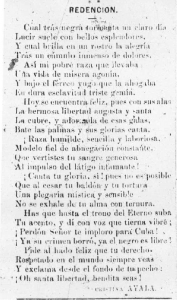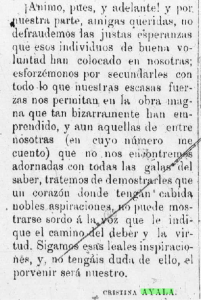By Bethany Dotson
With the re-opening of U.S./Cuban diplomatic relations—and the recent failure of the fourth round of negotiations—Cuba is experiencing a new wave of interest from intellectuals and the general public alike.
With this interest in mind, Gale has added new supplemental content to the Archives Unbound collection Feminism in Cuba: the journal Minerva, Revista Quincenal Dedica a la Mujer de Color, or Minerva, Quarterly Journal Dedicated to the Woman of Color, published between 1888 and 1914. Cited in recent academic publications as diverse as Slave Emancipation in Cuba: The Transition to Free Labor, 1860-1899 (University of Pittsburgh Press, 2000), Between the Lines: Literary Transnationalism and African American Poetics (Oxford University Press, 2011), Cuba’s Racial Crucible: The Sexual Economy of Social Identities, 1750-2000 (Indiana University Press, 2015), and Black Political Activism and the Cuban Republic (University of North Carolina Press, 2011), Minerva is useful not only for its study of feminism in Cuba but also for Afro-Cuban nationalist ideology and identity, racial politics and culture in the Cuban Republic, and much more.
Take, for example, one of the founding editors of the magazine, Maria Cristina Fragas (pen name Cristina Ayala). Ayala composed a “redemption song” in 1889; as Morrison says: “Fragas wrote “Rendención” three years after La Real Orden of 1886 formally abolished slavery in Cuba. She was thirty years old.”[1] You can see this poem below.[2]
In addition to poetry, of which Ayala was a master, she also wrote various articles urging women of color to demonstrate for additional rights, writing such inspirational words as can be seen below: “Follow these loyal inspirations, and do not doubt it, the future will be ours.”[3]
Minerva started publication ten years before national independence, and so the time period and subject matter alone makes Minerva a journal of historical merit. The only extant collection of Minerva sits in Cuba, making this digitized collection all the more valuable. Any scholar studying Afro-Cuban or African-American poetry, photojournalism, African-American or Afro-Cuban political and social history, Latin American art and music, and more, will be remiss in omitting this collection from study.
Footnotes
[1] Cuba’s Racial Crucible: The Sexual Economy of Social Identities, 1750-2000, Karen Y. Morrison, Indiana University Press 2015
[2] “Rendición.” Minerva: Revista Quincenal Dedicada a la Mujer de Color, 15 de Febrero 1889. Año 2. Número 9. 15 de Febrero de 1889. Women’s Movement in Cuba, 1898-1958: The Stoner Collection on Cuban Feminism. Archives Unbound. Web. 1 June 2015.
[3] “Me adhiero.” Minerva: Revista Quincenal Dedicada A La Mujer De Color, 26 De Enero De 1889. Año 2. Numero 7. 26 de Enero de 1889. Women’s Movement in Cuba, 1898-1958: The Stoner Collection on Cuban Feminism. Archives Unbound. Web. 1 June 2015.
Additional Sources
Callahan, Monique-Adelle. Between the Lines: Literary Transnationalism and African American Poetics. Oxford: Oxford University Press, 2011.
Pappademos, Melina. Black Political Activism and the Cuban Republic. Chapel Hill: University of North Carolina Press, 2011.
Scott, Rebecca Jarvis. Slave Emancipation in Cuba: The Transition to Free Labor, 1860-1899. Pittsburgh: University of Pittsburgh Press, 2000.
[alert-info] 
About the Author
Bethany is an avid reader, coffee enthusiast, and travel maven. She’s a proud UMich alum with a BA in English & Spanish. While currently working on her MBA, she looks forward to graduating so she has time for hobbies again!
[/alert-info]Air Jordan Release Dates Calendar



